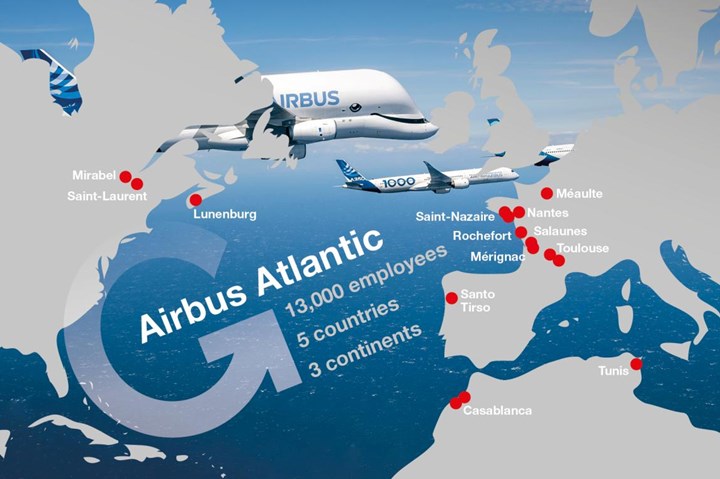Airbus Atlantic, a new global player for aerostructures, is launched
The wholly owned subsidiary unifies the strengths, resources and skills of Airbus and STELIA Aerospace, establishes 500 direct and 1,500 indirect supplies.

Photo Credit: Airbus
A wholly owned Airbus (Toulouse, France) subsidiary, Airbus Atlantic, a global player in the aerostructures field, was officially established on Jan. 1, 2022. The new company groups the strengths, resources and skills of Airbus’ sites in Nantes and Montoir-de-Bretagne, the central functions associated with their activities, as well as the STELIA Aerospace (Toulouse) sites worldwide.
This unification is part of the transformation project announced in April 2021, aimed at strengthening the value chain of aerostructure assembly within Airbus’ industrial setup. It marks the intention to gain competitiveness, innovation and quality for the benefit of Airbus’ current and future programs.
As such, the company says Airbus Atlantic will be an essential element in the group’s value chain and will play a key role with regard to the aerostructure supply chain, with more than 500 direct suppliers (flying products) and more than 2,000 indirect suppliers (general procurement products).
“At the heart of Airbus, Airbus Atlantic aims at meeting the great challenges linked to a sustainable aviation industry, pioneering new technologies,” says Cédric Gautier, CEO of Airbus Atlantic. “Our first mission will be to ensure the satisfaction of all our customers and to establish new standards of excellence in terms of quality and operational efficiency. I have full confidence in the talent, enthusiasm and commitment of the Airbus Atlantic teams to write this new chapter of our history with success.”
With 13,000 staff in five countries and three continents, and an estimated business volume of around €3.5 billion, Airbus Atlantic is reported to be number two in the world for aerostructures, number one for pilot seats and ranks in the top three for business class and first class passenger seats, which continue to be marketed under the STELIA Aerospace brand.
Related Content
-
Materials & Processes: Composites fibers and resins
Compared to legacy materials like steel, aluminum, iron and titanium, composites are still coming of age, and only just now are being better understood by design and manufacturing engineers. However, composites’ physical properties — combined with unbeatable light weight — make them undeniably attractive.
-
Materials & Processes: Resin matrices for composites
The matrix binds the fiber reinforcement, gives the composite component its shape and determines its surface quality. A composite matrix may be a polymer, ceramic, metal or carbon. Here’s a guide to selection.
-
Infinite Composites: Type V tanks for space, hydrogen, automotive and more
After a decade of proving its linerless, weight-saving composite tanks with NASA and more than 30 aerospace companies, this CryoSphere pioneer is scaling for growth in commercial space and sustainable transportation on Earth.
















